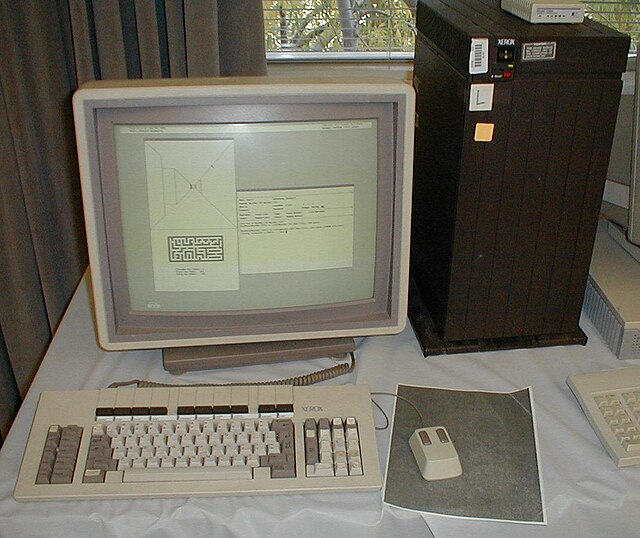The Xerox Star workstation, officially named Xerox 8010 Information System, is the first commercial personal computer to incorporate technologies that have since become standard in personal computers, including a bitmapped display, a window-based graphical user interface, icons, folders, mouse (two-button), Ethernet networking, file servers, print servers, and email.
Xerox Star 8010
Compound document and desktop of 8010/40 system
Windowed interface with scrollbars and greyscale graphics
Evolution of the used document icon shape
A workstation is a special computer designed for technical or scientific applications. Intended primarily to be used by a single user, they are commonly connected to a local area network and run multi-user operating systems. The term workstation has been used loosely to refer to everything from a mainframe computer terminal to a PC connected to a network, but the most common form refers to the class of hardware offered by several current and defunct companies such as Sun Microsystems, Silicon Graphics, Apollo Computer, DEC, HP, NeXT, and IBM which powered the 3D computer graphics revolution of the late 1990s.
Tim Berners-Lee created the World Wide Web at CERN in Switzerland on the NeXTcube workstation.
Early Xerox workstation
HP 9000 model 425 workstation running HP-UX 9 and Visual User Environment (VUE)
HP 9000 model 735 running HP-UX and the Common Desktop Environment (CDE)







